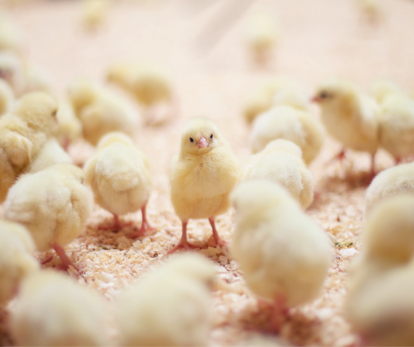10 things you can do today to shop more ethically


In part one of this two-part blog, we looked at the timeline of the animal rights movement up until the mid-20th century. This included some of the visionaries and thought leaders who stood for a more equitable world for our animal kin.
Part two of our timeline takes us to the latter half of the 20th century and the beliefs, organisations, and laws that are helping to shape the animal freedom movement today.
1954: The Humane Society of the United States was founded in 1954 to prevent cruelty to animals in laboratories, slaughterhouses, and puppy mills. It cited its mission as being to “create a humane and sustainable world for all animals, including people, through education, advocacy, and the promotion of respect and compassion”.
1964: The Vegan Society was first registered as a charity in the UK.
This is also the year when Ruth Harrison publishes Animal Machines, exposing the intense suffering imposed on farmed animals as a result of industrial agriculture. The book created a public outcry and led to the British government appointing a committee to investigate animal welfare. The resulting “Brambell Report” was the first to outline the five freedoms.
1966: The US Congress passed the Animal Welfare Act, the only Federal law in the United States that regulates the treatment of animals in research, teaching, testing, exhibition, transport, and by dealers.
1970: Writer, academic and animal rights advocate Richard D Ryder first coined the term “speciesism” to describe the exclusion of other animals from the protections afforded to human beings.
1971: In an essay called “Experiments on Animals”, Richard D Ryder highlighted speciesist contradictions such as scientists reasoning that some species are sufficiently similar to humans to justify using them for experiments but dissimilar to humans when it comes to defending experimentation from a moral standpoint.
1975: The United Nations passes the Convention on International Trade in Endangered Species of Wild Fauna and Flora (CITES). This international agreement between governments aims to ensure that international trade in animals and plants does not threaten the survival of these species.
In the same year, Australian philosopher Peter Singer released his ground-breaking book, Animal Liberation: A New Ethics of our Treatment of Animals. Many people regard this as expressing the founding philosophical principles of the modern animal liberation movement.
Singer argued that any being capable of suffering deserves equal consideration and that giving someone less consideration based on their species is no more justified than discrimination based on skin colour.
1976: The first animal rights group, the Animal Liberation Front (ALF) was founded in Britain.
1979: US attorneys in the emerging field of animal law founded The Animal Legal Defence Fund to ensure stronger enforcement of anti-cruelty laws and more humane treatment of animals in every corner of American life.
1980: PETA (People for the Ethical Treatment of Animals) was founded in the US.
In the same year, Peter Singer and Jim Mason published Animal Factories, a book which cast a spotlight on industrial animal agriculture and the grim reality of factory farming.
1981: The Vegetarian Information Service in the US became the Farm Animal Reform Movement, promoting the benefits of a vegan diet and the rights of animals not to be used as food. (In 2011, it changed its name to the Farm Animal Rights Movement).
1983: The first World Day for Farmed Animals (WDFA) (known then as “World Farm Animals Day”) exposed the abuses of animal farming and memorialised the billions of sentient beings slaughtered for food throughout the world.
That same year, American philosopher Tom Regan published The Case for Animal Rights, in which he argued that many other animals besides humans have moral rights because they are “subjects-of-a-life”, i.e., they have their own desires, preferences, fears, memories, perceptions, feel pleasure and pain, and experience a rich emotional inner life. Being subject-of-a-life means it is not morally acceptable to treat a being as a “thing” or “repository”.
1987: A 15-year-old California high school student called Jennifer Graham refused to dissect a frog in class, believing it to be immoral. After her request for an alternative assignment was refused and her grade suffered, Jennifer sued the school district, claiming that being expected to perform dissection violated her First Amendment right to her deeply held religious and moral beliefs. As a result, California gave high school students the right to refuse to conduct dissection and to receive an alternative assignment without penalty.
Today, 18 US states have student choice laws in public education.
1989: Avon Products Inc. announced that it would no longer use animals in testing the safety of its products, making it the first major cosmetics maker to institute a permanent ban on the controversial practice.
1990: PETA began its “I’d Rather Go Naked Than Wear Fur” campaign. Over the next 30 years, high-profile celebrities would back the campaign in a drive to move fashion designers and consumers away from making and wearing fur garments.
1992: The European Union passed Directive 92/65/EEC to regulate the trade in animals within the EU and with other countries.
The same year, Switzerland became the first country to constitutionally recognise animals with a provision warranting the protection of “the dignity of the creature”.
1993: In response to growing public pressure, General Motors announced it would stop using live animals in crash tests.
It was in the same year that the Great Ape Project (GAP) was founded by an international organisation of primatologists, anthropologists and ethicists to defend the rights of non-human great primates (chimpanzees, gorillas, orangutans and bonobos).
2002: Matthew Scully published Dominion: The Power of Man, the Suffering of Animals, and the Call to Mercy. In this book, he explored the many ways in which humans have turned away from their animal kin “to create a climate of cruelty and exploitation toward them”.
2004: The EU passed a first ban prohibiting the testing of finished cosmetic products on other animals.
2005: Switzerland passed The Animal Welfare Act 2005 to prohibit inflicting pain, suffering, or harm on an animal, inducing anxiety in an animal, or otherwise disregarding its dignity without justification. The Act also prohibited mishandling, neglect, or unnecessary overwork. This legislation applies to all vertebrates as well as to invertebrates designated by the Federal Council.
2006: The UK’s Animal Welfare Act 2006 is a principal law relating to animal welfare. It says that humans have a duty of care as “owners and keepers” of other animals and must make sure that they meet their needs via the Five Freedoms (access to a suitable diet, suitable environment and place to live, freedom to exhibit normal behaviours, freedom to mix with or live apart from other members of their species depending on what is appropriate, and freedom from pain, injury, suffering and disease).
Prior to this legislation, animal welfare organisations had only been able to take legal action after an animal had suffered. The Animal Welfare Act 2006 gave them powers to educate and intervene to help prevent suffering.
2009: When the Lisbon Treaty came into force, it amended the ‘Treaty on the Functioning of the European Union’ (TFEU) and introduced the recognition that animals are sentient beings. Article 13 of Title II states that:
“In formulating and implementing the Union’s agriculture, fisheries, transport, internal market, research and technological development and space policies, the Union and the Member States shall, since animals are sentient beings, pay full regard to the welfare requirements of animals, while respecting the legislative or administrative provisions and customs of the EU countries relating in particular to religious rites, cultural traditions and regional heritage.”
2012: The EU banned the use of battery cages for hens after a 13-year phase-out. However, furnished cages and other systems of captivity are still allowed.
2013: The documentary film Blackfish drew attention to the tragic consequences of keeping orcas in captivity. As a direct result of the film, public interest in attractions such as SeaWorld began to wane and legislation such as The Orca Welfare and Safety Act (2016) emerged to phase out the holding of orcas in captivity.
2014: India banned in-country animal testing for cosmetics and household products. Later that year, it also banned importing such products from other countries.
2015: Ringling Bros. and Barnum & Bailey Circus announced it would phase out the use of elephants in its shows by 2018. The circus ended its 146-year run in 2017 but announced its return in 2022 with only human performers.
2016: SeaWorld announced it would end its controversial orca breeding programme.
2019: California became the first US state to ban the sale and manufacture of new fur products.
2020: An employment tribunal in Britain ruled that ethical veganism is a “philosophical belief” and therefore is protected in law. This was the first time an employment tribunal in Britain ruled this.
2021: The Animal Legal Defense Fund announced the U.S. District Court for the Southern District of Ohio had recognised animals as “legal persons” or “interested persons” for the first time in the United States.
2022: In the UK, the Animal Welfare (Sentience) Act 2022 recognised animal sentience in UK law for the first time, including all vertebrates and some invertebrates, such as octopuses and lobsters.
At the start of the same year, France and Germany jointly become the first countries to prohibit “chick culling” and urge other EU countries to follow suit.
There have been many other milestones and moments throughout history that have driven forward or set back the animal freedom movement – if only we could cover them all!
As well as humans willing to speak for their animal kin, we mustn’t forget the acts of animal resistance as an expression of agency and freewill.
As for what the future will hold, we’ll need to look to the courts of law and public opinion.
Two recent legal cases highlight potential hope and challenges.
The first was a case in Utah when a jury acquitted two animal rights activists of burglary and theft for removing two sick piglets from a factory farm.
The jury ruled that the activists had not stolen property but had acted in the interests of the pigs to protect their welfare rather than trying to harm the factory farm itself. The activists attracted a huge amount of public support because they were seen as acting genuinely out of compassion. People recognised the pigs as individuals who were suffering.
But the law doesn’t always favour activists. In another case, two activists in Canada were sentenced to 30 days in prison and 12 months probation for their part in the ‘Meat the Victims’ action at Excelsior Hog Farm, in which around 60 activists occupied one of the pig barns for several hours. The judge ruled that the activists intended to disrupt the farm’s business “for political purposes” rather than to act in the interests of suffering animals or “prevent imminent harm”.
Maybe future shifts in public consciousness will come from centring individual animals in their stories. Can people connect more with the suffering of a few individuals than the suffering of faceless or voiceless billions?
Time will tell, but the past timeline gives us clues.